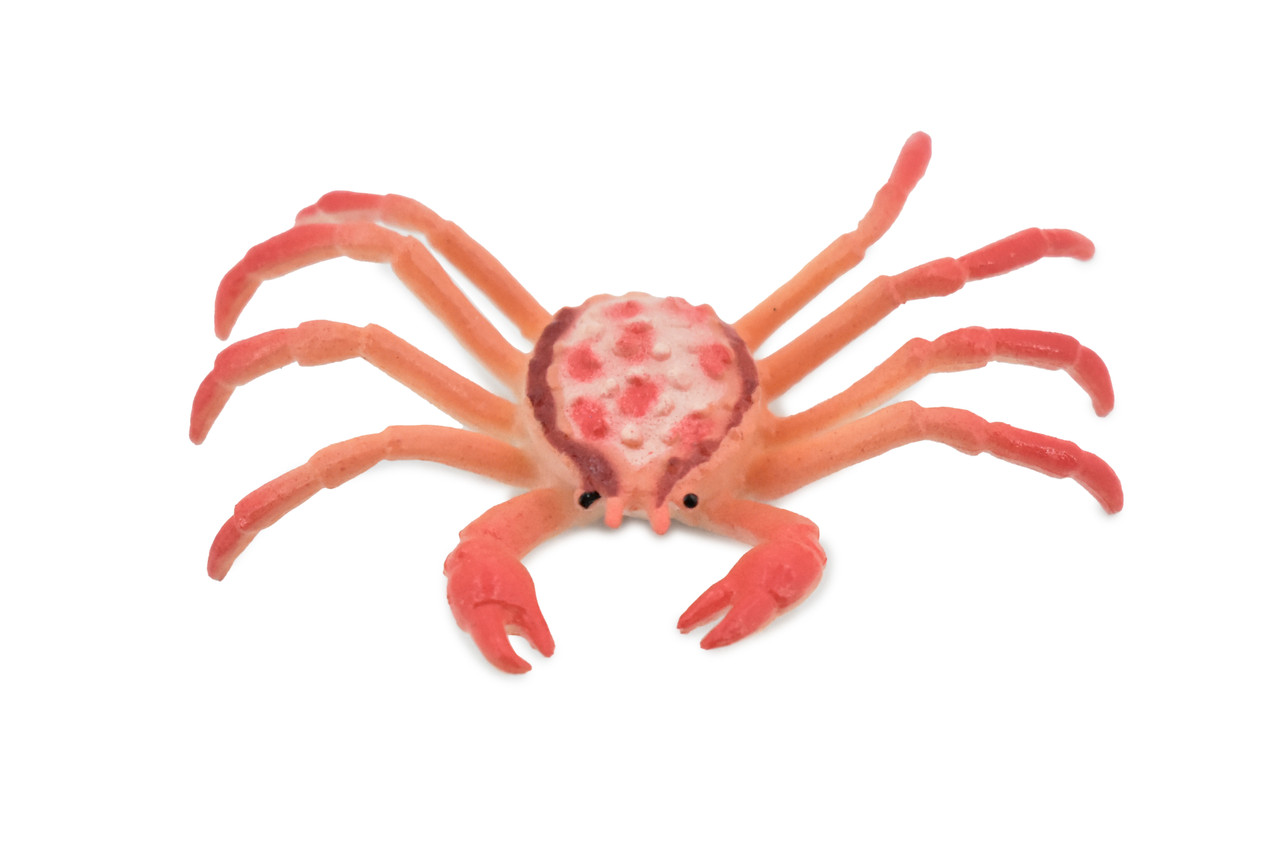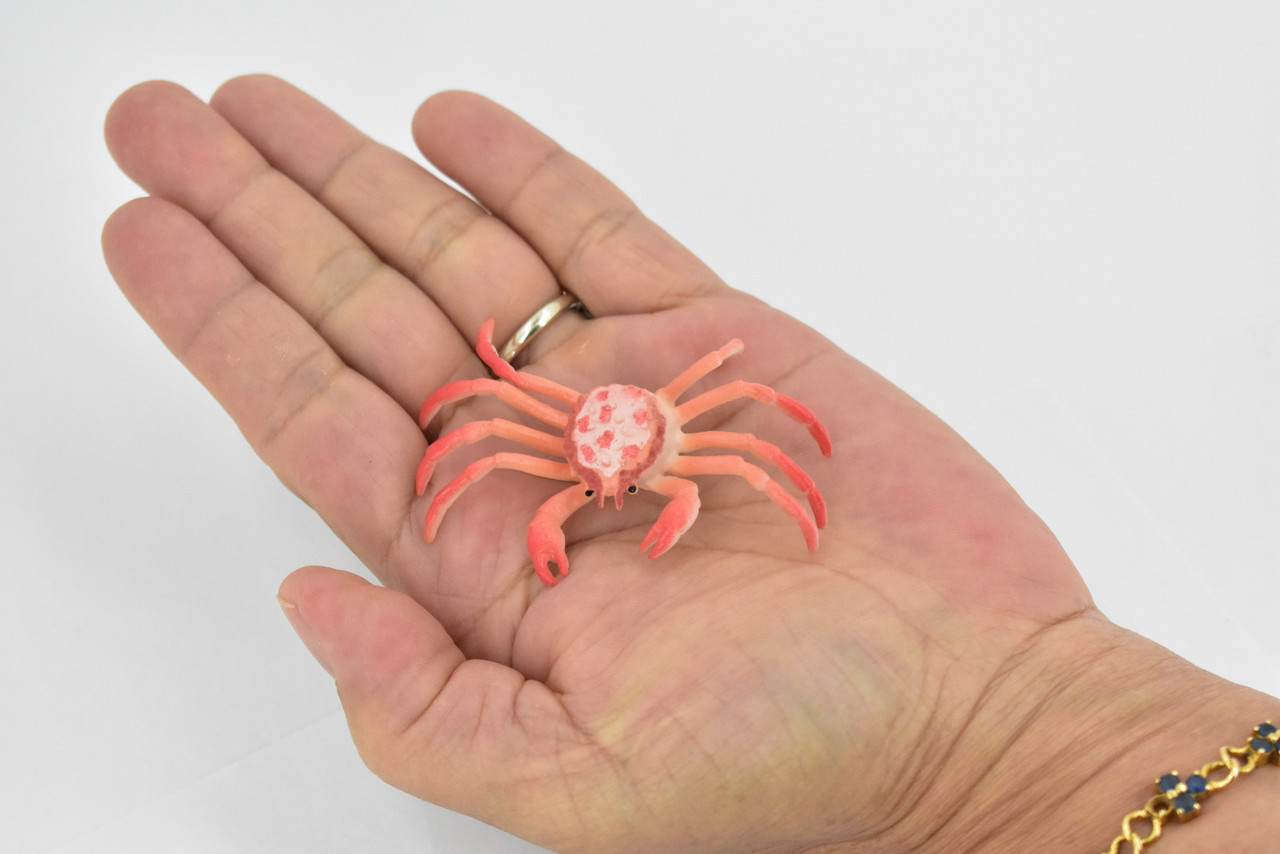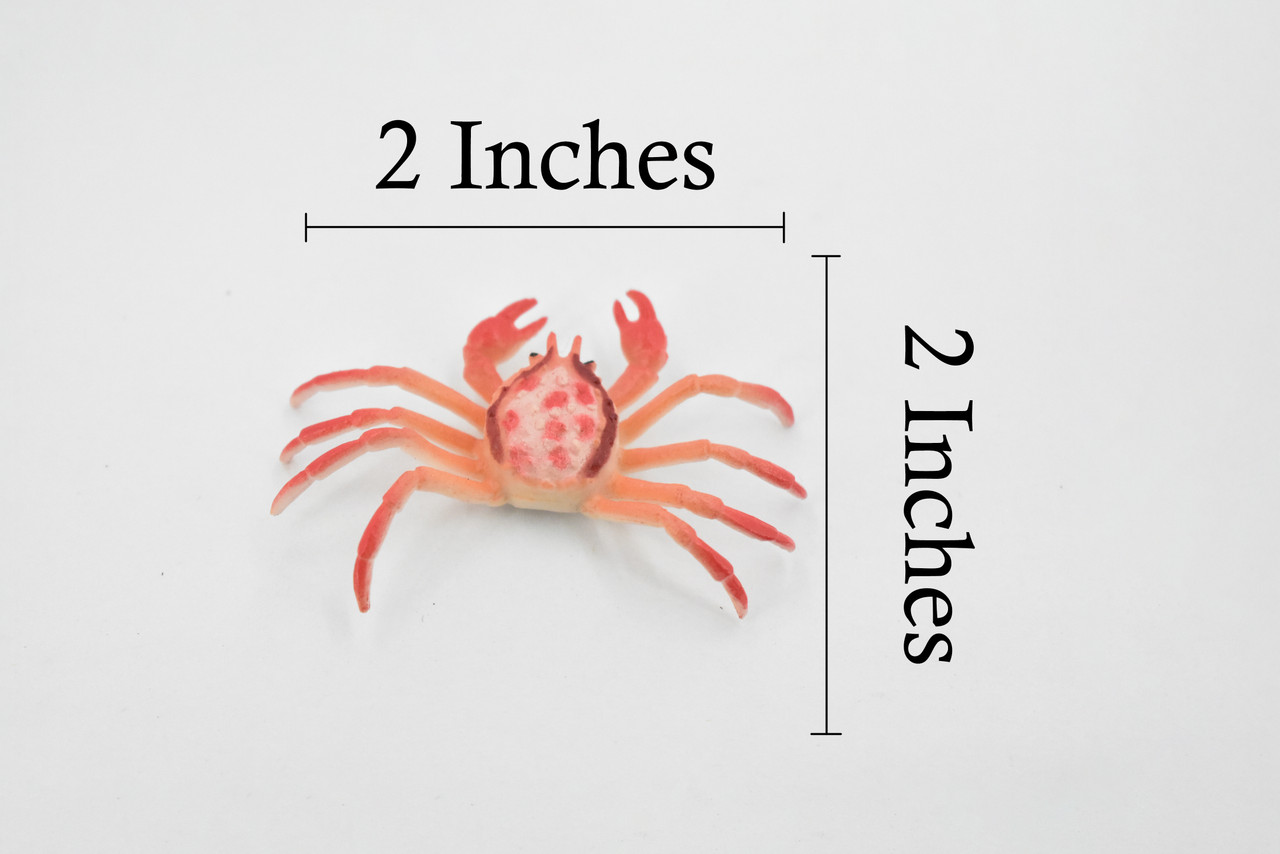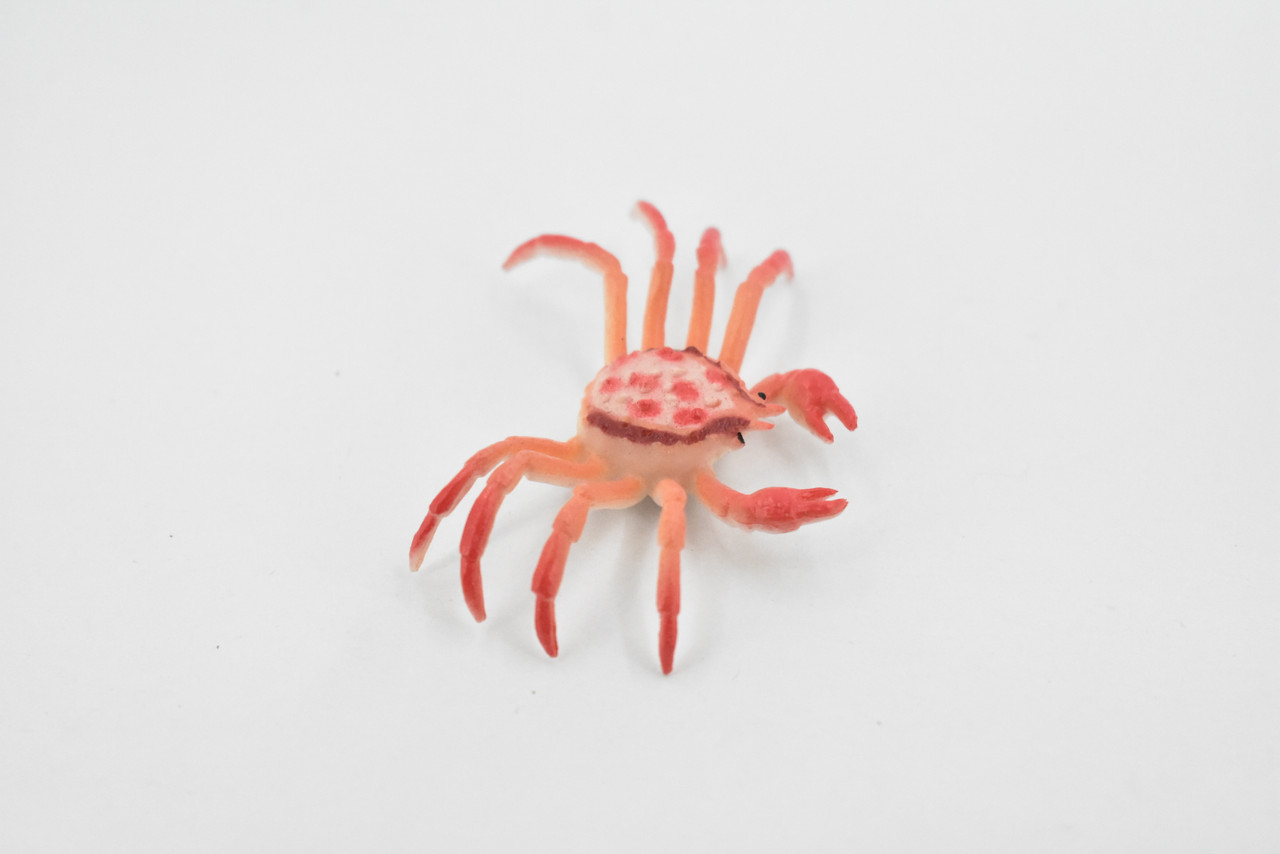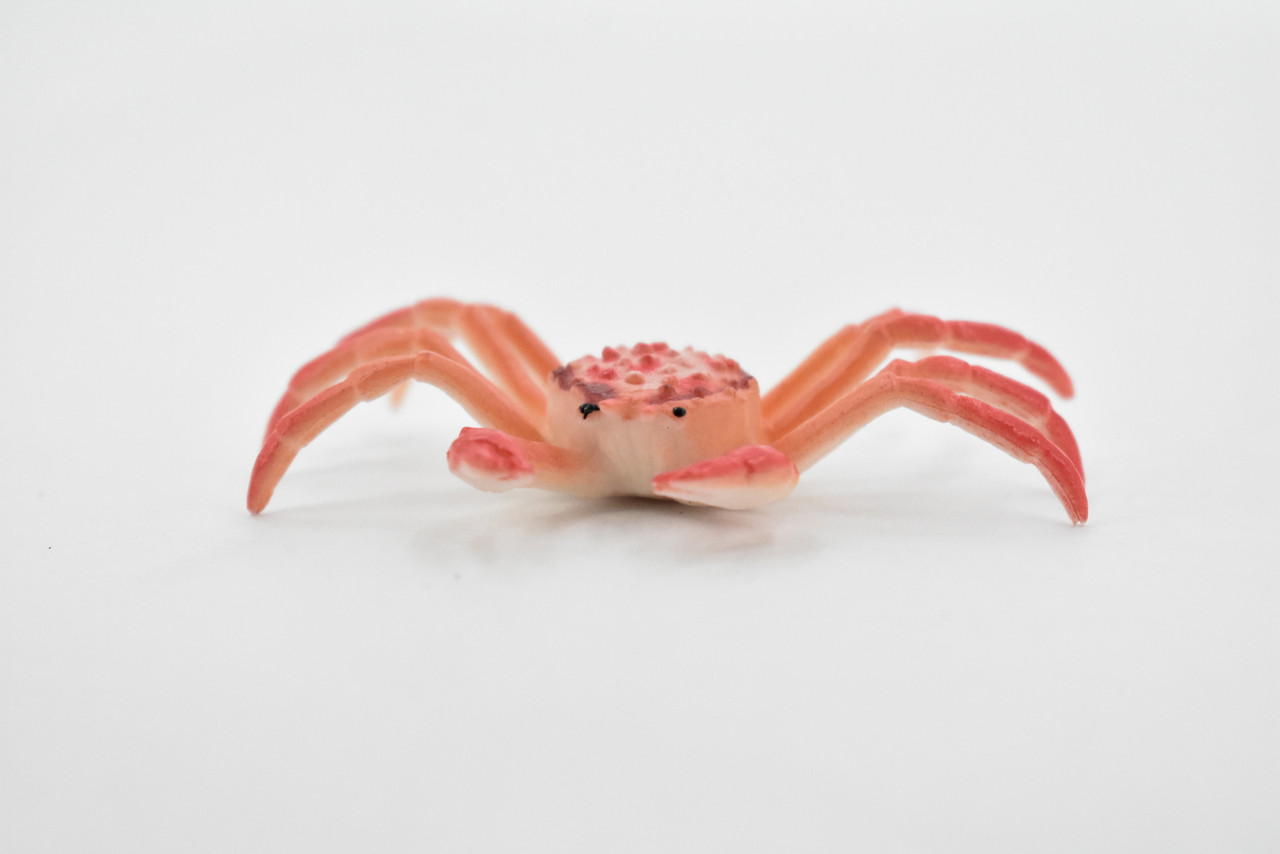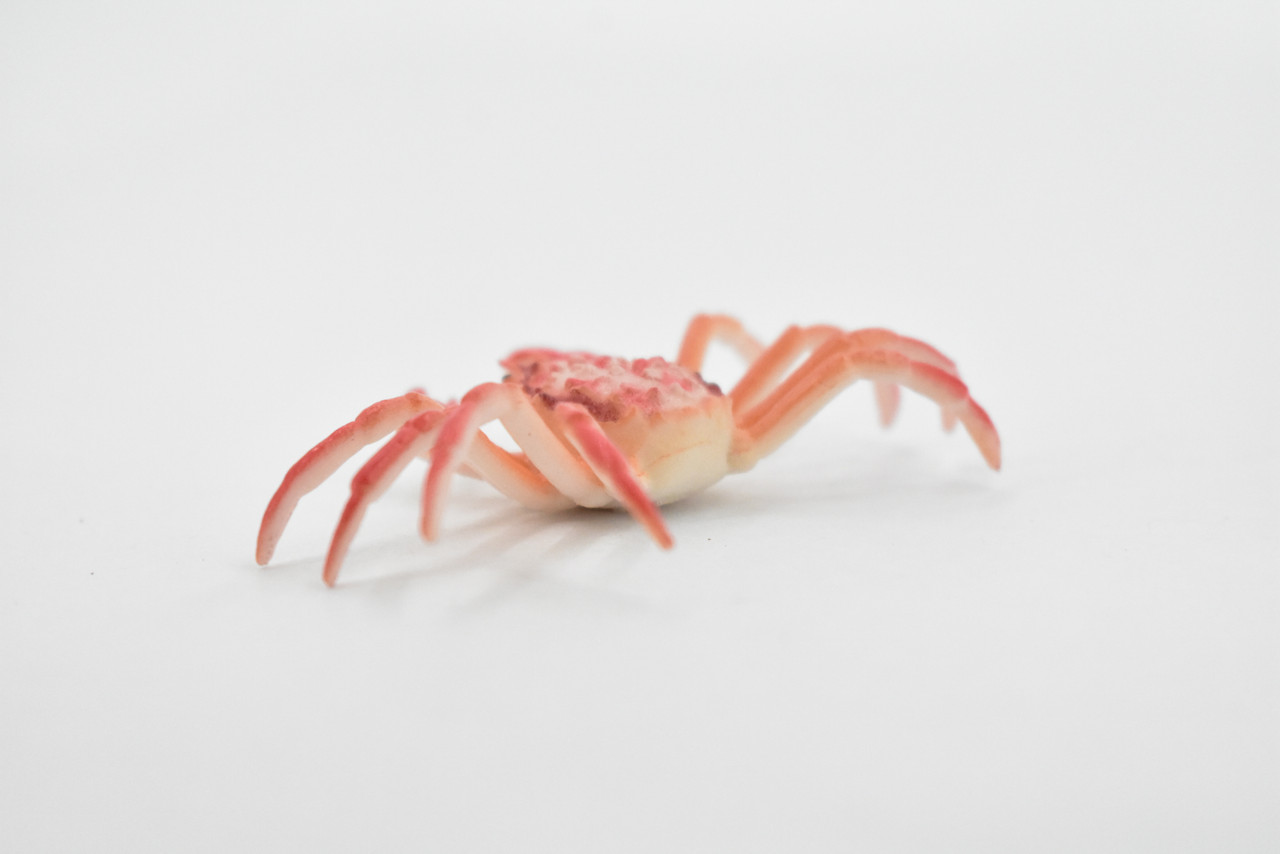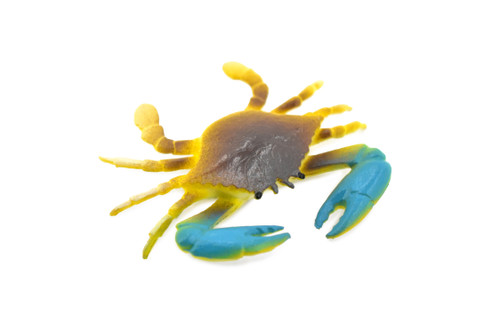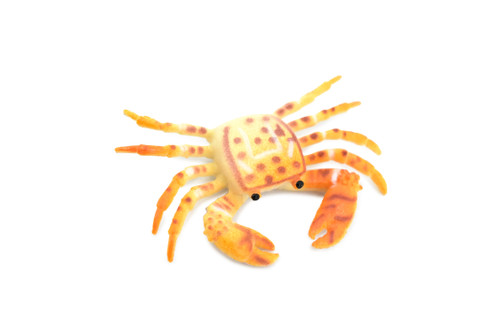Product Description
Our Plastic King Crab Our king crab is made of plastic .and measures 2 1/2 inches from side to side. This plastic crustacean is one of our series of lively and lifelike plastic animals. Its realistic shape and details will be enjoyed as part of a school project, diorama, plastic animal collection, as a party favor, or gift. Our king crab toy is for decoration or play only. It does not float, and should NOT be put in your aquarium. However, you can make an interesting sea-life or aquarium shoebox diorama using this and other plastic aquatic creatures and mammals, sharks, fish, sea turtles, birds, and décor from our gift shop. There is no mess, no feeding, and no tank cleaning :)Come look through our entire collection of crab toys and gifts.
Although there are over 50 crab families and 1000s of species, all crabs have basically the same body plan: four pairs of walking legs and one pair of claws (also called nippers or pincers). Their shell is actually their skeleton, called an exoskeleton, and protects their thorax, gills and the internal organs of the head. Like the octopus and sea star, if a crab loses a limb it will regenerate (grow back). The red king crab (Paralithodes camtschaticus) is the most recognized species of king crab, being heavily fished in the Bering sea by fishermen made famous by the TV show "Dangerous Catch". They are very large. A red king crab can reach a carapace width of 11 inches and a leg span of almost six feet. An interesting and widely-accepted theory suggests that these huge crabs may have evolved from hermit crabs (an evolutionary process called carcinisation). While there is still doubt about the validity of this theory, evidence supporting it continues to mount.
King crabs are a taxon of decapod crustaceans that are chiefly found in cold seas. Because of their large size and the taste of their meat, many species are widely caught and sold as food with the most common being the red king crab (Paralithodes camtschaticus).
King crabs are generally thought to be derived from hermit crab ancestors within the Paguridae, which may explain the asymmetry still found in the adult forms. This ancestry is supported by several anatomical peculiarities which are present only in king crabs and hermit crabs. Although some doubt still exists about this hypothesis, king crabs are the most widely quoted example of carcinisation among the Decapoda. The evidence for this explanation comes from the asymmetry of the king crab's abdomen, which is thought to reflect the asymmetry of hermit crabs, which must fit into a spiral shell.
Thanks for visiting Collectible Wildlife Gifts, the leading provider of high-quality, lifelike animal Designs and gifts! We work hard to ensure we have a diverse range of products. Each product is inspected for their quality craftsmanship. Whether you're searching for a great gift or seeking educational designs for displays, we’ve got you covered.
At Collectible Wildlife Gifts, our products appeal to a wide range of customers, including family, friends, and educators. Our products are trusted and used by professional organizations as well including aquariums, zoos, and movie studios.
Our extensive line of products boasts everything from plush sharks to educational animal growth cycles. Our products bring joy to recipients, and serve as valuable educational resources, sparking curiosity and fostering learning.
Discover the wonders of the natural world with Collectible Wildlife Gifts. Browse our collection today!

